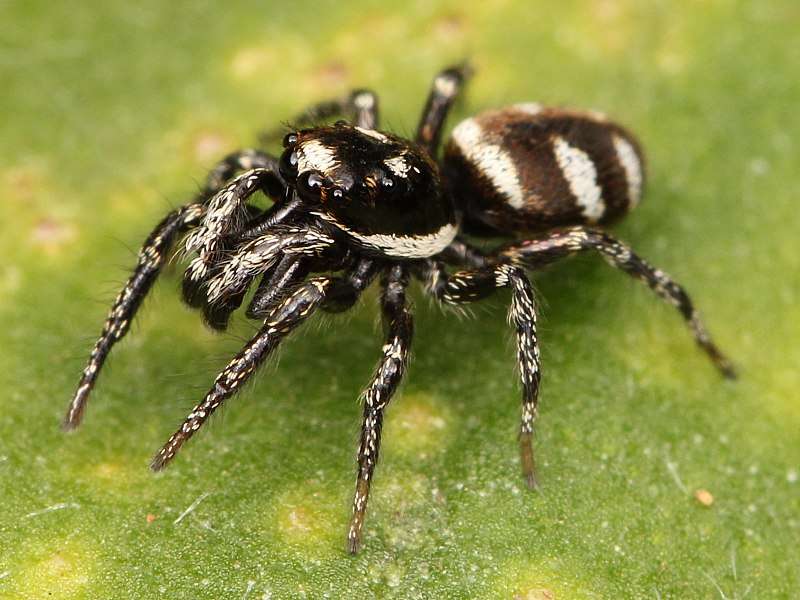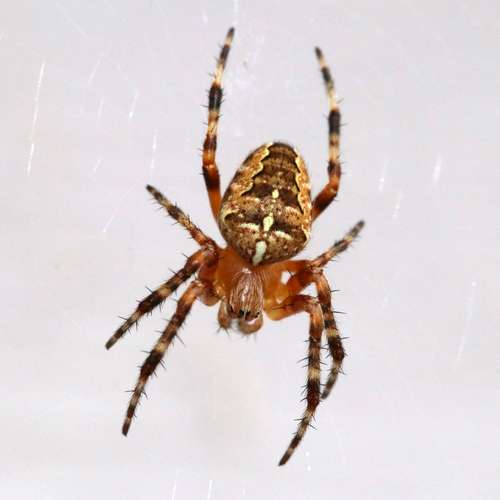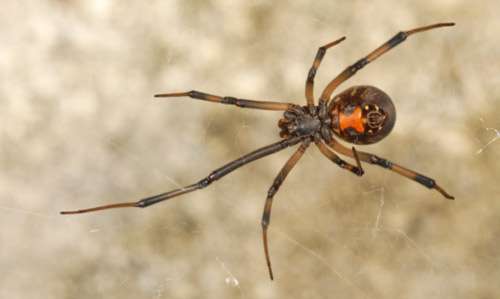
A typical jumping spider seen in the Northern Hemisphere is the zebra jumping spider (Salticus scenicus). Their scientific name, Salticus, comes from the Greek scenicus, which means “theatrical” or “of a picturesque area,” and the Latin salticus, which means “dancing” in reference to their agility. Their common name relates to their distinctive black-and-white colors. These spiders are petite and tightly packed. They are able to target and follow prey thanks to their excellent vision.
Geographical Extent and Habitat
There is a Holarctic distribution for zebra spiders. Although they are native to Europe, where they can be found all across the continent, it is thought that they are an imported species in North America, from northern Mexico to southern Canada. Along with records from Afghanistan, Greenland, Iceland, Kazakhstan, Nigeria, and Argentina, this species has also been observed in Russia.
Urban, terrestrial species of spiders include zebra spiders. Common locations for these spiders are vertical surfaces like walls, fences, and window panes. Additionally, they inhabit gardens, meadows, and woodlands.
Physical Characteristics
Size
Zebra spiders are small, measuring between 4 and 7 mm. Males typically range from 4-5.5 mm while females typically range from 4-6.5 mm.
Abdomen
They have three to four white stripes on their abdomens, which are all entire at the base but narrow or fractured in the middle. Compared to the cephalothorax, the abdomen is both longer and narrower.
Legs
On their legs, males have a more ornate striation pattern. The chelicerae of males stretch almost horizontally and are larger than those of females.
Eyes
Eight eyes are present in these spiders, which have two pairs in the front row and one pair in each of the other rows. The eyes are placed in three rows. The primary AME (anterior median eyes), which are enormous and are utilized for binocular vision, are situated in the middle of the first row of eyes. The first row of eyes include the ALE (anterior lateral eyes), which are smaller than the AME. Spiders of the Salticidae family have this trait. The spider can see ahead through the eyes in the second row and upward through the eyes in the last row.
Hairs
These spiders have hair all over them. On their legs and feet, they have scopulae, which are pillows of hair. The sole area of the spiders’ bodies that touches the substrate is the thick scopulae on the underside of their feet. Jumping spiders can adhere to smooth, vertical substrates thanks to the hairs on their feet, which enhance the surface area of the feet and act as adhesive forces.

Feeding Habits
Zebra spiders are energetic hunters who prey mostly on insects and have the ability to capture prey that is much larger than themselves. Dipterans, which include mosquitoes and flies, are their main prey. They will, however, eat other creatures of the same kind as well as smaller spiders. The smaller spider is always the victim of cannibalism. Zebra spiders hunt for prey by using their keen vision.
Importance for Human
Negative
Zebra spiders, like the majority of spiders, produce venom from glands inside the chelicerae. This has economic significance for humans. Since this species is so little, a human would probably not be hurt by a bite from it or even have their skin pierced.
Positive
Fly and mosquitoes are the two main prey items for zebra spiders. These organisms are both disease carriers and human pests. Zebra spider predation can help control populations of these pests.
Keeping as Pet
This spider makes for a fun pet because of its distinctive and intriguing appearance, friendly but engaging disposition, and sharp brain. The jumping spiders, which comprise a large number of species, have a variety of personalities; they might be timid, calm, nimble, or jittery. Despite the variations, these spiders make excellent pets in general.
Table





